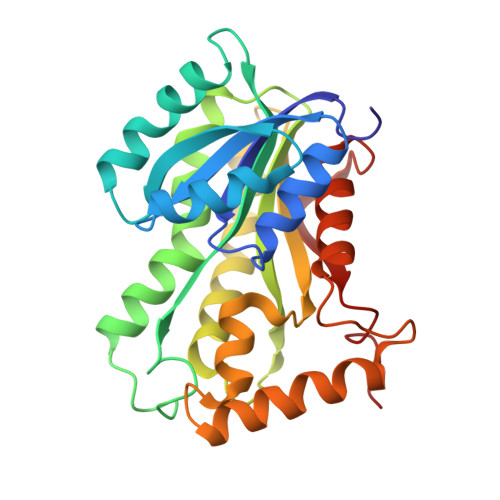Modification of the NADH of the isoniazid target (InhA) from Mycobacterium tuberculosis.
Rozwarski, D.A., Grant, G.A., Barton, D.H., Jacobs Jr., W.R., Sacchettini, J.C.(1998) Science 279: 98-102
- PubMed: 9417034
- DOI: https://doi.org/10.1126/science.279.5347.98
- Primary Citation of Related Structures:
1ZID - PubMed Abstract:
The preferred antitubercular drug isoniazid specifically targets a long-chain enoyl-acyl carrier protein reductase (InhA), an enzyme essential for mycolic acid biosynthesis in Mycobacterium tuberculosis. Despite the widespread use of this drug for more than 40 years, its precise mode of action has remained obscure. Data from x-ray crystallography and mass spectrometry reveal that the mechanism of isoniazid action against InhA is covalent attachment of the activated form of the drug to the nicotinamide ring of nicotinamide adenine dinucleotide bound within the active site of InhA.
- Department of Biochemistry and Biophysics, Texas A&M University, College Station, TX 77843, USA.
Organizational Affiliation:

















